| Fire & Sword:
Scenario Preview, Part One
By Mike Bennighof, Ph.D.
November 2024
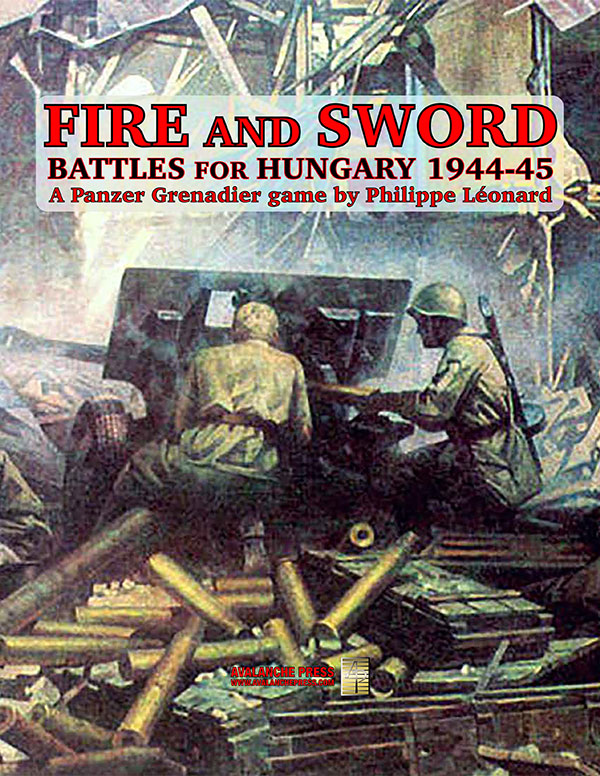 It’s taken a while, because it needed to be just right, but Panzer Grenadier: Fire & Sword is on the verge of release. This is the essence of Panzer Grenadier: armored combat on the Hungarian plain in late 1944 and early 1945, with the Red Army at the peak of its combat power and the German and Axis forces still a potent foe. It’s taken a while, because it needed to be just right, but Panzer Grenadier: Fire & Sword is on the verge of release. This is the essence of Panzer Grenadier: armored combat on the Hungarian plain in late 1944 and early 1945, with the Red Army at the peak of its combat power and the German and Axis forces still a potent foe.
This is a big game – the largest in the Panzer Grenadier series – which is fitting for such a big theme. All of the late-war heavy metal is here: Tiger II and JS2 heavy tanks, T34/85 and Panther medium tanks, a whole passel of more tanks and assault guns and self-propelled guns and more. Hungarian paratroopers and German deception platoons and Soviet penal troops.
Fire & Sword, designed by Philippe Léonard (1940: The Fall of France, Road to Dunkirk) is a spectacular game. It’s filled with tank battles and intense infantry struggles, with armored trains and river gunboats and Hungarian rocket launchers. It’s also packed with the history of the campaign, as you’ll see below. Let’s have a look at Chapter One.
See the rest of the preview here:
• Scenario Preview, Part Two
• Scenario Preview, Part Three
• Scenario Preview, Part Four
• Scenario Preview, Part Five
• Scenario Preview, Part Six
• Scenario Preview, Part Seven
Chapter One
South of Budapest
In the late summer of 1944, things began to fall apart for Nazi Germany on the Eastern Front. On the central part of the front, the 1st Ukrainian front followed up the overwhelming success of Operation Bagration with further victories and advances in the Lviv-Sandomierz Offensive in July and August. Romania dropped out of the Axis after Soviet victories in the Jassy-Kishinev Offensive, and switched sides to join the Allied cause. In early September, Bulgaria turned on the Germans as well and joined the Allies.
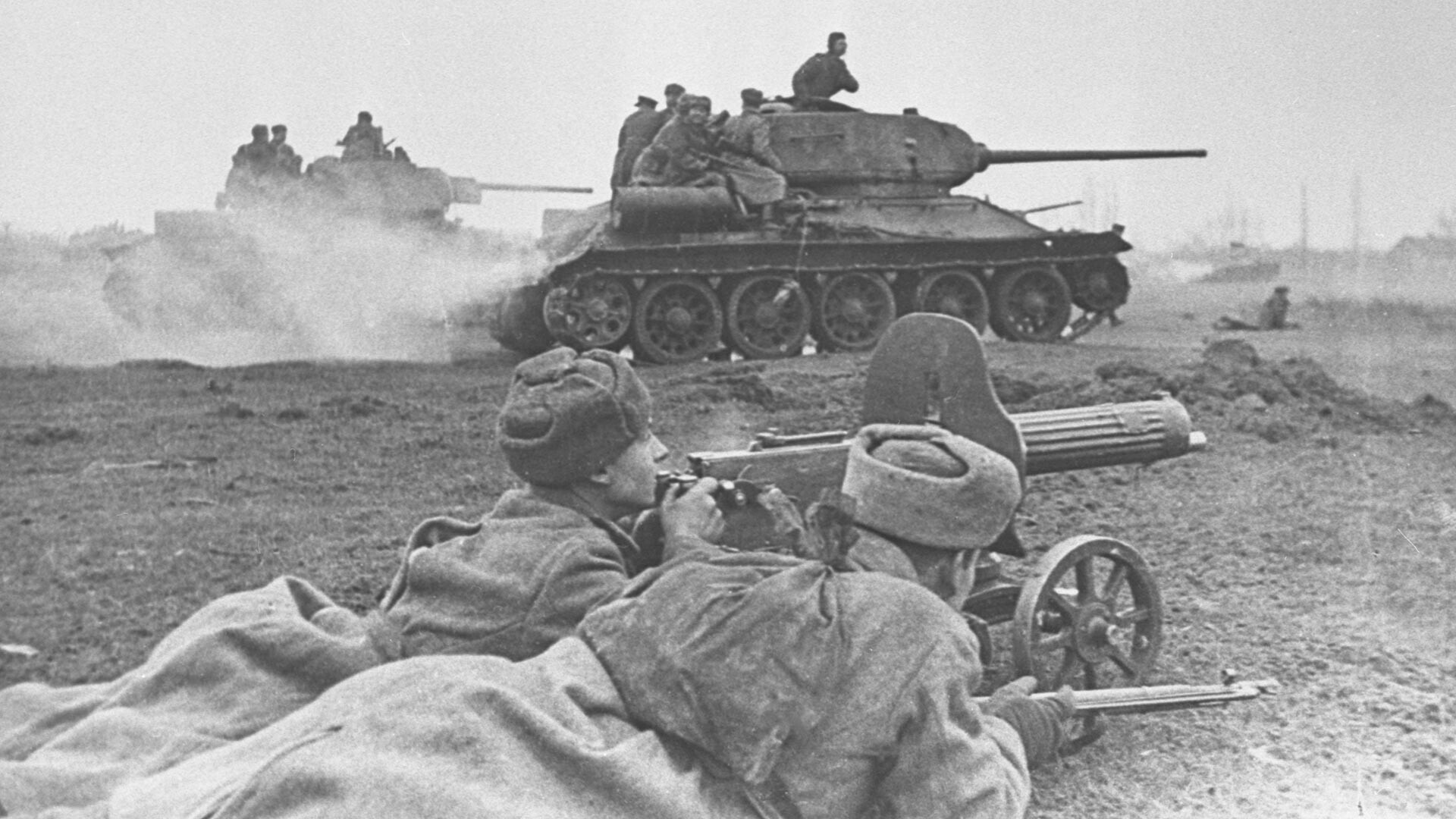
Soviet T34/85 and T34/76 tanks on the attack.
The offensive continued into Hungary, where the Royal Hungarian Army mobilized to defend the kingdom, promptly suffering enormous casualties, thanks in large part to its poor state of training and outdated weaponry. The Battle of Debrecen in early October saw the 2nd Ukrainian Front push its way over the Tisza River in eastern Hungary as the Soviets now set their sights on Budapest, the Hungarian capital. The Hungarian Regent, Admiral Miklos Horthy, announced that Hungary was leaving the war; he was seized by the Germans and forced to abdicate, but tens of thousands of Hungarian soldiers deserted or defected.
On 28 October, Soviet Supreme Leader Josef Stalin personally ordered Marshal Rodion Malinovsky of 2nd Ukrainian Front to take Budapest immediately. Malinovsky argued strenuously that he needed another five days to prepare, but the Great Helmsman remained adamant: the advance must resume immediately. And on the next day, it did.
Malinovsky and his staff quickly sketched out a frontal attack followed by a double envelopment east and west of the Hungarian capital. On 29 October, the 46th Army attacked along a 110-kilometer front south of Budapest, between the Danube and Tisza rivers. The 23rd Rifle Corps broke through the lines of the 3rd Hungarian Army with ease. On each wing, mobile formations immediately exploited the breakthrough, the 2nd Guards Mechanized Corps on the right towards Kecskemét and the 4th Guards Mechanized Corps on the left, along the Danube.
Scenario One
Drive on Kecskemét
29 October 1944
South of Kecskemét, Hungary
 The 2nd Guards Mechanized Corps, the only armored formation in 2nd Ukrainian Front, would spearhead the attack of 46th Army. Their first objective would be Kecskemét, a small city sitting astride a crossroads on the way to Budapest. This would be the centerpiece of 46th Army’s attack; the 4th and 6th Guards Mechanized Brigades, reinforced by the 25th Guards Tank Regiment, reached the main line of resistance, held by Hungarian troops, in the early evening hours. The 2nd Guards Mechanized Corps, the only armored formation in 2nd Ukrainian Front, would spearhead the attack of 46th Army. Their first objective would be Kecskemét, a small city sitting astride a crossroads on the way to Budapest. This would be the centerpiece of 46th Army’s attack; the 4th and 6th Guards Mechanized Brigades, reinforced by the 25th Guards Tank Regiment, reached the main line of resistance, held by Hungarian troops, in the early evening hours.
Conclusion
 Second Guards Mechanized Corps lost its first tank about ninety minutes after its brigades jumped off. At around 1700, Corporal Ferenc Mester of the Hungarian III/1 Independent Motorized Medium Howitzer Artillery Battalion, using a Panzerfaust as a member of a tank-hunter patrol, knocked out an approaching T35/85 south of Kecskemét on the highway leading to Budapest. Second Guards Mechanized Corps lost its first tank about ninety minutes after its brigades jumped off. At around 1700, Corporal Ferenc Mester of the Hungarian III/1 Independent Motorized Medium Howitzer Artillery Battalion, using a Panzerfaust as a member of a tank-hunter patrol, knocked out an approaching T35/85 south of Kecskemét on the highway leading to Budapest.
Defense of the Kecskemét sector fell to the Hungarian 8th Reserve Infantry Division, reinforced by the 7th Assault Artillery Battalion, Armored Train No. 103 carrying a pioneer company, and some scattered troops. The bulk of the 8th Reserve Infantry Division fled without warning but the 24th Reserve Infantry Regiment held its positions and even carried out a counterattack supported by the StuGIIIs of the 7th Assault Artillery Battalion. Hungarian assault guns and panzerfausts took out more than a dozen Soviet AFVs in the night battle. Despite a promising start, the Soviet offensive already began to lose momentum on the evening of the first day.
The Hungarians launched their first significant counter-attack at around 1900 when six tanks accompanied by a company of infantry (about 100 men) hit the 320th Rifle Division south of Kecskemét. One hour later up to 160 Hungarian troops supported by two tanks counter-attacked the 179th Guards Rifle Regiment (of 59th Guards Rifle Division). Both counter-attacks, however, were far too weak to pose a threat to the Soviet divisions and were beaten back with ease. The Hungarians, now mostly scattered remnants, still tried to offer resistance. They not only repeatedly counter-attacked, but also frequently opened fire from ambush positions. These tactics benefited from the terrain: low hills covered by wind-blown sand, many farmsteads, grassland farms, and isolated courtyards. “The enemy tried to convert every settlement or farmstead into a strongpoint,” recalled Lt. Gen. Ivan Timofeevich Shlemin, commanding 46th Army.
Shlemin’s divisions quickly found a remedy: each regiment formed an assault detachment comprised of a rifle battalion supported by tanks and artillery. The heavy guns engaged the targets with direct fire. Under their cover the infantry and the armor approached the buildings and then stormed them. Often part of the detachment (a company or platoon) bypassed the makeshift bunker and simultaneously attacked it from the flanks and the rear. Thus, they eliminated the strongholds one after another and before long they had silenced the last pockets of resistance.
Shlemin’s troops were now free to continue their drive to the north. The 2nd Guards Mechanised Corps remained the spearhead. By midnight the 6th Guards Mechanized Brigade reached the vicinity of Csorba (probably Városföld nowadays), just to the south of Kecskemét. At the same time its left-flank neighbour, 4th Guards
Mechanized Brigade, approached Szél Imre, where it was counter-attacked by the Hungarian 1st Armored Division. The Hungarians offered sporadic resistance at best; even though tanks and assault guns often supported their counter-attacks, their efforts were too weak to stop the armored avalanche.
Notes
We kick off Fire & Sword with a strong Soviet attack against a Hungarian defense line manned by troops who might rather be elsewhere. The Soviets have mobility and firepower and morale all on their side; the Hungarians do have the benefits of a prepared position and some armor support (assault guns) to try to stem the iron tide.
Scenario Two
Eagle 5555
30 October 1944
Kecskemét, Hungary
 The Soviet 2nd Guards Mechanized Corps had received two coded orders: “Volga 3333” (“Prepare to attack”) and “Eagle 5555” (“Launch the attack”). Starting on 29 October, the attack went on against sporadic Hungarian resistance. The Soviet brigades surged on through the night and when dawn broke 30 October, the faint shapes of Kecskemét’s small skyline appeared in the mist ahead of the Soviet scouts. At dawn, the 6th and 4th Guards Mechanized Brigades deployed and attacked the city from two directions. The Soviet 2nd Guards Mechanized Corps had received two coded orders: “Volga 3333” (“Prepare to attack”) and “Eagle 5555” (“Launch the attack”). Starting on 29 October, the attack went on against sporadic Hungarian resistance. The Soviet brigades surged on through the night and when dawn broke 30 October, the faint shapes of Kecskemét’s small skyline appeared in the mist ahead of the Soviet scouts. At dawn, the 6th and 4th Guards Mechanized Brigades deployed and attacked the city from two directions.
Conclusion
 On the west side of the city, Soviet recon subunits quickly penetrated the front lines of the 1st Hussar Division and forced the now-dismounted Hungarian cavalry to retreat. The Soviet 4th Guards Mechanized Brigade’s forward detachment reached the southwestern edge of Kecskemét at 0700 and ran into more bitter resistance. On the west side of the city, Soviet recon subunits quickly penetrated the front lines of the 1st Hussar Division and forced the now-dismounted Hungarian cavalry to retreat. The Soviet 4th Guards Mechanized Brigade’s forward detachment reached the southwestern edge of Kecskemét at 0700 and ran into more bitter resistance.
The German Flak Regiment 133 defending the city with its numerous 88mm and four-barreled 20mm anti-aircraft guns deployed considerable firepower. Shortly after 1100, the Germans reported that they had already knocked out 11 of the 35 Soviet tanks.
By morning, the Hungarian 24th Regiment had been pressed back to the southern perimeter of Kecskemét, but still defended the southern railway station. From their positions in bunkers and houses, the Axis troops continued to pour accurate artillery and machine-gun fire onto the Soviets. The defenders organized their troops around the regiment with the support of the StuGIIIG’s from the 3rd Battery of the 7th Assault Artillery Battalion. The defenders claimed to have destroyed seven T-34 tanks and two BM-13 rocket launchers during the battle.
Starting around 0830, the elements of the Hungarian 1st Armored Division operating from the area of Korhànköz Railway station southwest of Kecskemét carried out several company- and battalion-strength counterthrusts, each with the support of six to eight AFVs. By 0900, it became already clear to the Soviets that they would not be able to take the town by a swift charge. The daring assault had brought unexpected losses: the 4th Guards Mechanized Brigade had lost four tanks, two trucks and one BA-64 armored car. The initial plan hadn’t worked.
As a deployable armored reserve, the Axis could only rely on 11 combat-ready tanks of the 27 Turans available, as well as a few Toldi light tanks and Nimród SP AA guns of the 1st Honvéd Armored Division, and also the 18 combat-ready tanks, tank destroyers and assault guns of the German 24th Panzer Division. The Hungarian 7th Honvéd Assault Artillery Battalion possessed seven combat-ready AFVs out of their 19 StuGIIIG assault guns. On 29 October, the Hungarian 3rd Army and the German 6th Army were amalgamated into Armeegruppe Fretter-Pico.
Notes
The Soviets are on the attack again, and this time the Hungarians have some very potent help in the form of German 88mm and 20mm Flak batteries. The former is very capable against enemy tanks, and the latter against infantry. In this late-war environment, both sides are deploying mixed tank-infantry combined arms groups, which means that the Hungarians aren’t totally without support, but they have nothing like the T34/85.
Daily Content includes no AI-generated content or third-party ads. We work hard to keep it that way, and that’s a lot of work. You can help us keep things that way with your gift through this link right here.
Scenario Three
In the Puszta
30 October 1944
Kecskemét, Hungary
 In front of Kecskemét, the Soviets made their first serious mistake. Instead of outflanking the city and leaving the mopping-up to the infantry, the 2nd Guards Mechanized Corps tried to take the city by coup de main. Poor planning and toxic competition between unit commanders resulted in failure. When Soviet armor eventually went around the obstacle to isolate it, the Germans initiated a series of counter-attacks on the flanks of the shock groups. Moreover, the German Air Force directed the entire might of its air units in Hungary against the Soviet columns. In front of Kecskemét, the Soviets made their first serious mistake. Instead of outflanking the city and leaving the mopping-up to the infantry, the 2nd Guards Mechanized Corps tried to take the city by coup de main. Poor planning and toxic competition between unit commanders resulted in failure. When Soviet armor eventually went around the obstacle to isolate it, the Germans initiated a series of counter-attacks on the flanks of the shock groups. Moreover, the German Air Force directed the entire might of its air units in Hungary against the Soviet columns.
East of Kecskemét, the former cavalrymen of the 24th Panzer Division made up one branch of the pincer attack. However, the 24th Panzer Division was not only understrength but also fragmented, with parts of the division still en route to the battle. From dawn to noon, the division’s armored battle group (III Battalion/24th Panzer Regiment; I Battalion/26th Panzer Grenadier Regiment; 24th Recon Battalion) launched incessant attacks against the flank of the advancing Soviet forces, east of Kecskemét. The 59th and 108th Guards Rifle Divisions (37th Rifle Corps) successfully repulsed them all.
Around noon, the Germans pressed forward again from Kisfái and from the forest north Koháry Szent Lorinc, through a gap between the two Soviet rifle divisions. However, the Soviets put the whole 251st Guards SP Artillery Regiment (equipped with SU85’s), one battery of the 991st SP Artillery Regiment (with SU76’s), part of the 320th Howitzer Artillery Regiment (from the 25th Howitzer Artillery Brigade of the 7th Breakthrough Artillery Division, with 22 guns) into action to close that gap. The large-caliber guns of the Soviet 7th Breakthrough Artillery Division finally relieved the dire situation and forced the 24th Panzer Division’s armored battle group to retreat again.
At 1400,18 panzers attacked the Soviet positions along the railway embankment and 12 more advanced against the 305th Guards Rifle Regiment. The 76mm guns of the 245th Artillery Regiment knocked out three panzers and the infantry’s anti-tank rifles and grenades claimed a few more. More anti-tank artillery forced a new German withdrawal. In early afternoon, the 24th Panzer Division’s northern battle group, the reinforced 21st Panzer Grenadier Regiment, eventually arrived. At 1500, the armored battle group and the reinforced 21st Panzer Grenadier Regiment (divisional staff, II Battalion/21st Panzer Grenadier Regiment; II Battalion/26th Panzer Grenadier Regiment and II Battalion/89th Panzer Artillery Regiment) regrouped south-east of Kecskemét and prepared a new attack towards the town.
Conclusion
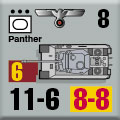 In the puszta, the Germans assembled the entire strength of the armored battle group into a powerful fist. Up to 30 of their tanks advanced from the forest east of Koháry-major. The blow fell on the III Battalion of the 308th Guards Rifle Regiment that had just taken Koháry Szent Lorinc in difficult house-to-house fighting. The German attack also smashed the left flank of the 305th Guards Rifle Regiment before it was rebuffed by Soviet artillery. In the puszta, the Germans assembled the entire strength of the armored battle group into a powerful fist. Up to 30 of their tanks advanced from the forest east of Koháry-major. The blow fell on the III Battalion of the 308th Guards Rifle Regiment that had just taken Koháry Szent Lorinc in difficult house-to-house fighting. The German attack also smashed the left flank of the 305th Guards Rifle Regiment before it was rebuffed by Soviet artillery.
Meanwhile, the forward detachment (the 2nd Battalion, supported by two companies of the 30th Guards Heavy Tank Brigade with its JS2, with the infantry riding on tanks) of the 37th Guards Tank Brigade severed the railway and main road northwards. Now the 37th Guards Tank Brigade had to deal with two threats at the same time. In the north, the 179th Guards Rifle Regiment of the 59th Guards Rifle Division lacked the troops to resist to the German assault. In the south, between Kisfái and Koháry Szent Lorinc, the German armored battle group attempted to drive a wedge between 59th and 108th Guards Rifle Divisions.
In response, the bulk of the tank brigade went to the north and its 1st Battalion went to Zrínyi-major west of the forest, facing the panzers. At around 1630, 28 panzers set out from Kisfái, bypassed the 183rd Guards Rifle Regiment and surged to the south-west to cut off the main road to Kecskemét. They ran straight into the guns of the T34/85’s, which destroyed 10 panzers, halting the attack for a moment. Fierce fighting raged throughout the afternoon and into the evening.
At 1840, the northern battle group reached a point three kilometers east of Kecskemét while the armored battle group, in the south, crossed the Kecskemét–Kiskunfélegyháza motorway six kilometers south-east of the city. By the evening the 37th Guards Tank Brigade could no longer withstand the enemy pressure and the Germans had fragmented it into three groups. The Soviet forward detachment (the reinforced 2nd Tank Battalion) was encircled by the panzer grenadiers one kilometer north-east of Ürgés in the south-east outskirts of Kecskemét. Its situation worsened when shortly before midnight the Axis artillery joined the battle and began to shell the trapped battalion. The exact location and condition of the 3rd Tank Battalion was unknown since radio communication had been lost; the battalion was busy repulsing attacks by enemy armor and panzer-grenadiers somewhere southeast or east of Kecskemét. The situation of the brigade’s motorized rifle battalion was not very clear either, since it had been split into groups and assigned piecemeal to the tank battalions.
The worst was yet to come: at around 2200, the 24th Panzer Division managed to open a corridor to Kecskemét, cutting off both Soviet tank battalions from their main forces. Elements of the German armored unit – I Battalion/26th Panzer Grenadier Regiment, staff and elements of Panzer Artillery Regiment 89 (Hummel, Wespe and StuH42) and also Panzer Pioneer Battalion 40 – finally penetrated the town on 31 October at 0200 and linked up with the anti-aircraft troops inside the city. Less than 24 hours after a promising start, the bulk of the 46th Army had been brought to a halt well short of its objectives. This German success enabled them to move two more panzer divisions into the Guards’ path and to complete the regrouping of three other mobile divisions to Budapest.
Notes
Tank battle! A big, swirling tank battle between German panzers and Guards T34/85’s. This is why you play Panzer Grenadier and not some half-assed 10-scenarios-and-call-it-a-day weak tea.
Scenario Four
Elephant Charge
2 November 1944
North of Kunszentmiklós, Hungary
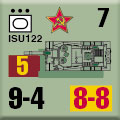 Despite the slow progress towards Budapest, Malinovsky had a trump card left: the Red Banner 4th Guards Mechanized Corps. In the first days of November, Lt. Gen. Vladimir Ivanovich Zhdanov’s crack corps (it had wrested Belgrade from the fascists less than two weeks prior, where Zhdanov was named a Hero of the Soviet Union) was to sneak through the gaps in the Hungarian defenses, take the motorway along the Danube eastern bank and strike Pest directly from the south. Despite the slow progress towards Budapest, Malinovsky had a trump card left: the Red Banner 4th Guards Mechanized Corps. In the first days of November, Lt. Gen. Vladimir Ivanovich Zhdanov’s crack corps (it had wrested Belgrade from the fascists less than two weeks prior, where Zhdanov was named a Hero of the Soviet Union) was to sneak through the gaps in the Hungarian defenses, take the motorway along the Danube eastern bank and strike Pest directly from the south.
The 14th Guards Mechanized Brigade, using an elephant as its identification sign, spearheaded the advance. The night march led them through boggy terrain north of Kunszentmiklós along a single four-meter-wide road that ran through marshes. Brushing aside the small enemy groups encountered along the way, the 14th Guards reached Alsó-Szent-István, an isolated farmstead in the puszta (“Alsó” means “Low”).
Conclusion
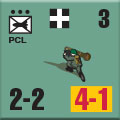 The forward elements of the 14th Guards Mechanized brigade charged the 1st Hungarian Hussar division that has been deployed to retake Kunszentmiklós. Around the farmstead, the Hungarians had set up a blocking position manned by two infantry companies supported by two mortar batteries, two artillery batteries and four self-propelled guns: the remnants of the once-proud Hussar division now called “Group Makay.” During the severe fighting, the Hungarians of the 1st Hussar Artillery Battalion and the 3rd Motorized Artillery Battalion, together with soldiers of the 3rd and 4th Hussar Regiments, destroyed several T-34/85s with panzerfausts. Nevertheless, the Soviet armor gave the defenders no chance. It attacked the position at full speed, crushed it and forced the Hungarians to flee. In the evening of 2 November, the forward units of the 4th Guards Mechanized Corps had drawn close to Dunaharaszti, on the eastern bank of the Danube River. The forward elements of the 14th Guards Mechanized brigade charged the 1st Hungarian Hussar division that has been deployed to retake Kunszentmiklós. Around the farmstead, the Hungarians had set up a blocking position manned by two infantry companies supported by two mortar batteries, two artillery batteries and four self-propelled guns: the remnants of the once-proud Hussar division now called “Group Makay.” During the severe fighting, the Hungarians of the 1st Hussar Artillery Battalion and the 3rd Motorized Artillery Battalion, together with soldiers of the 3rd and 4th Hussar Regiments, destroyed several T-34/85s with panzerfausts. Nevertheless, the Soviet armor gave the defenders no chance. It attacked the position at full speed, crushed it and forced the Hungarians to flee. In the evening of 2 November, the forward units of the 4th Guards Mechanized Corps had drawn close to Dunaharaszti, on the eastern bank of the Danube River.
Notes
This is a relatively small scenario, just one map with a Soviet tank-infantry force trying to smash through a Hungarian defense. The Hungarians actually have good numbers, but the Soviets have T34 tanks.
Scenario Five
Road of the Tigers
2 November 1944
Between Örkény and Cegléd, Hungary
 By the evening of 1 November, the 46th Army had already pressed very close to Budapest. During the night of 1-2 November, the Soviet 2nd Guards Mechanized Corps, one of the few armored formations fit for frontline action, was ordered to advance from the south and take Üllö and Monor. The Soviet spearheads indeed made a deep and fast advance reaching their objectives on the evening of 2 November. By the evening of 1 November, the 46th Army had already pressed very close to Budapest. During the night of 1-2 November, the Soviet 2nd Guards Mechanized Corps, one of the few armored formations fit for frontline action, was ordered to advance from the south and take Üllö and Monor. The Soviet spearheads indeed made a deep and fast advance reaching their objectives on the evening of 2 November.
The German-Hungarian forces comprising 1st Panzer Division fell back slightly to the south-west, to Örkény, before preparing a counterattack directed to the northeast to link up with the 23rd Panzer Division. Meanwhile, a battle group of the 23rd Panzer Division launched another attack from the area of Sashalom, 10 kilometers southwest of Cegléd, to join with the 1st Panzer Division and cut the Soviet column in two. The battle group, composed of the 503rd Heavy Tank Battalion, 23rd Panzer Regiment, 126th Panzer Grenadier Regiment and five PzKpfw IV tanks of the 24th Panzer Division, encountered stiff resistance soon after the attack started.
Conclusion
 On the right flank of the advancing Soviet 2nd Guards Mechanized Corps, the 6th Guards Mechanized Brigade had been reinforced with the 251st Guards SP Artillery Regiment, 210th Light Artillery Regiment, the 2nd Battalion of the 48th Guards Mortar Regiment, 159th AA Artillery Regiment and the 104th Mountain Engineer-Sapper Battalion. On the right flank of the advancing Soviet 2nd Guards Mechanized Corps, the 6th Guards Mechanized Brigade had been reinforced with the 251st Guards SP Artillery Regiment, 210th Light Artillery Regiment, the 2nd Battalion of the 48th Guards Mortar Regiment, 159th AA Artillery Regiment and the 104th Mountain Engineer-Sapper Battalion.
A critical situation soon developed as the 6th Guards Mechanized Brigade tried to break through. From the east, the reinforced 23rd Panzer Divivision attacked and sliced the column in two. The lead Panther tanks soon got into trouble from well-aimed fire from a concealed Soviet anti-tank strongpoint located at the edge of a marsh. The Tigers of the 503rd Heavy Tank Battalion’s 3rd Company were immediately committed to combat and soon knocked out 10 anti-tank guns and several AA guns as well. Then, following the withdrawing Soviet units, they moved out in direction of the meeting point 15 kilometers away.
After rumbling for three kilometers, the German AFVs ran into well-concealed Soviet AFVs on the outskirts of a forest, in an area with difficult terrain. As soon as the first Soviet tanks had been knocked out, the line of resistance quickly broke down. To move faster, the panzer grenadiers clambered onto the combat vehicles except for the two lead tanks. The advance continued despite local delaying actions. Another 1.5 kilometers along, the Germans spotted Soviet JS2 heavy tanks in a secluded farmstead and a new firefight broke out. One of the Soviet tanks was soon in flames and the battle group pressed forward despite one of the Tigers having bogged down in the mud.
After nightfall the German battle group reached its designated sector, a crossroads in the heart of a forest which they secured from all directions. However, since it seemed impossible to join forces with the 1st Panzer Division, the attack was called off and they were ordered back to Sashalom at around 2200. During their drive through the Soviet forces, the battle group destroyed seven Soviet AFVs, 13 anti-tank guns, 18 trucks, one four-barreled AA gun and eight horse-drawn wagons. On the German side, losses included a Panther, two Tiger II and four assault guns.
Notes
A pride of Tigers! The Germans wield a (small) battalion’s worth of Tiger II heavy tanks, trying to force their way across a long, narrow board filled with Soviet defenders. This is going to be tough even with all of those Tiger II tanks. But again: lots of Tiger II tanks in action.
You can order Fire and Sword right here.
Sword of Fire
Fire & Sword
Stalin’s Tanks
Eastern Front Artillery
Retail Price: $145.96
Package Price: $120.00
Gold Club Price: $96.00
Take up the Sword of Fire Here.
Sign up for our newsletter right here. Your info will never be sold or transferred; we'll just use it to update you on new games and new offers.
Mike Bennighof is president of Avalanche Press and holds a doctorate in history from Emory University. A Fulbright Scholar and NASA Journalist in Space finalist, he has published an unknowable number of books, games and articles on historical subjects.
He lives in Birmingham, Alabama with his wife and three children; he misses his dog, Leopold.
Daily Content includes no AI-generated content or third-party ads. We work hard to keep it that way, and that’s a lot of work. You can help us keep things that way with your gift through this link right here. |
